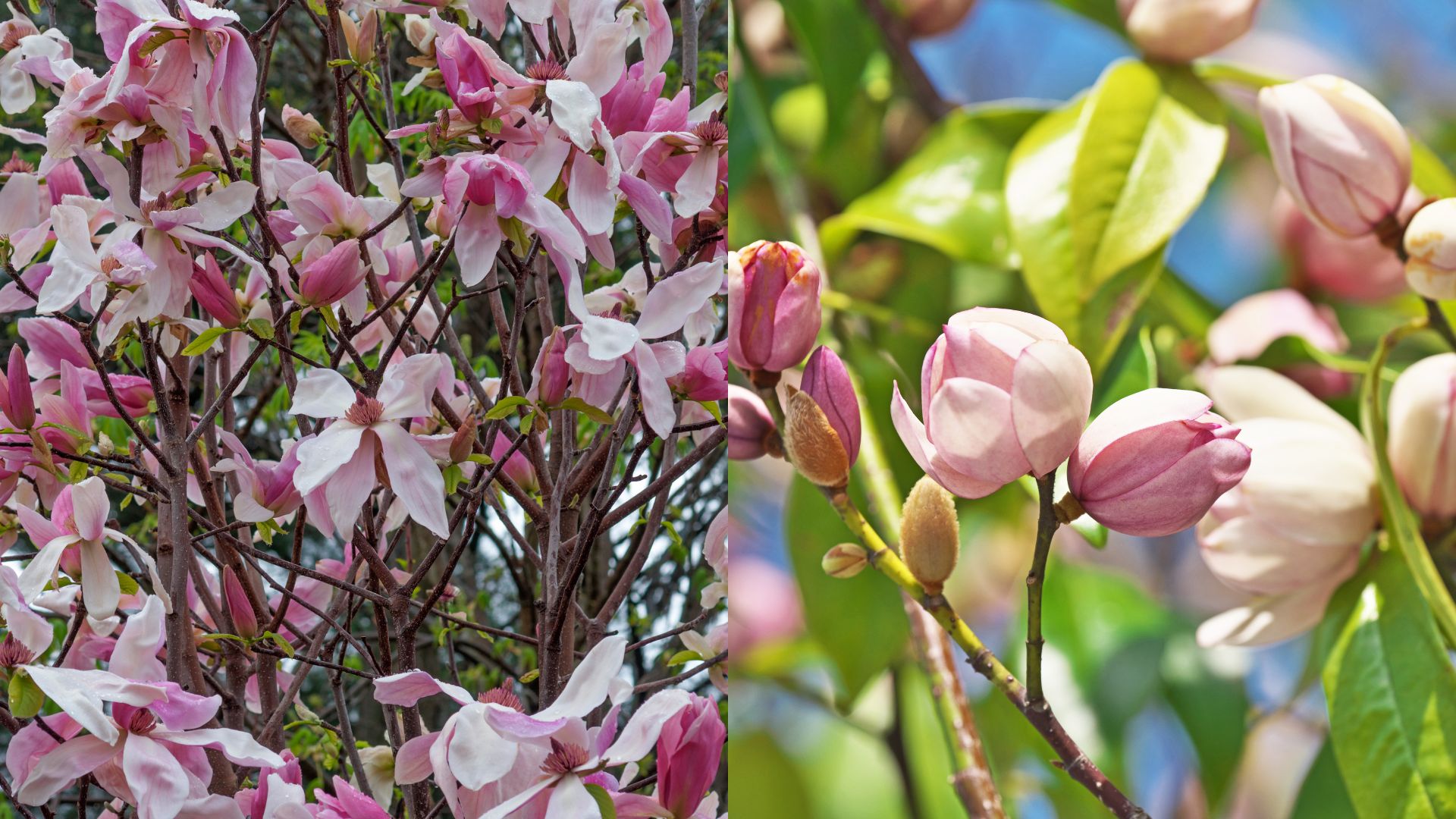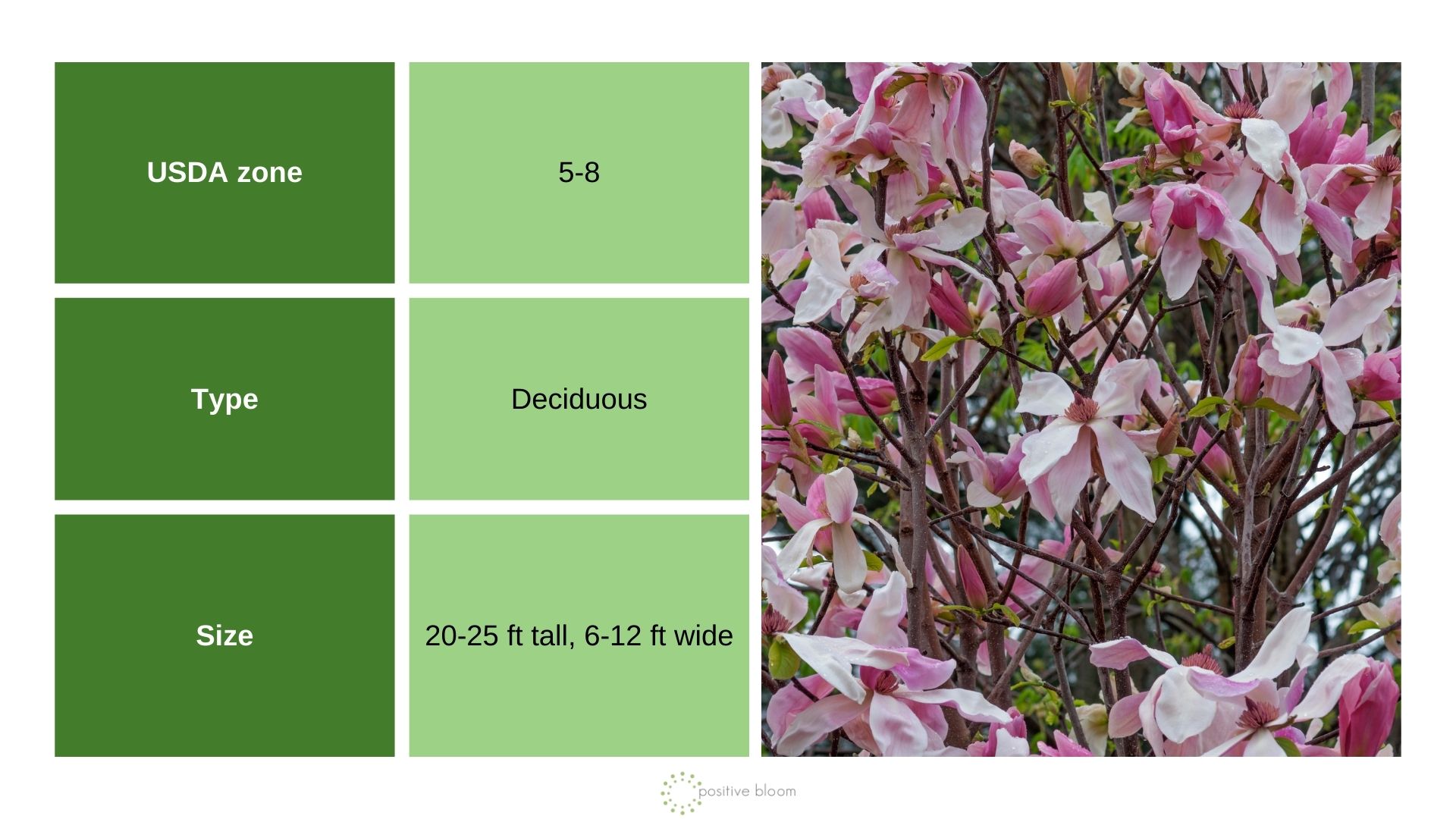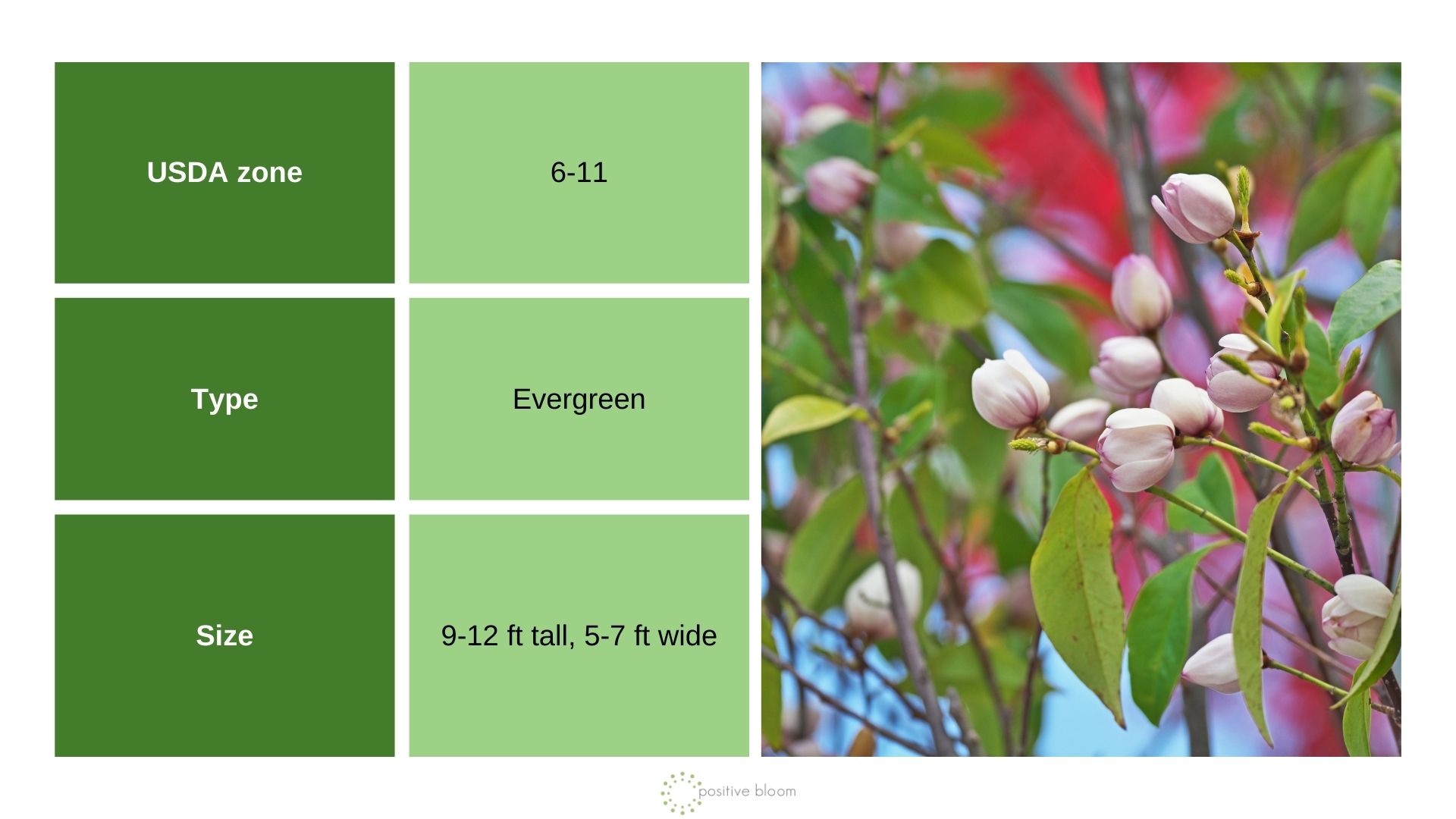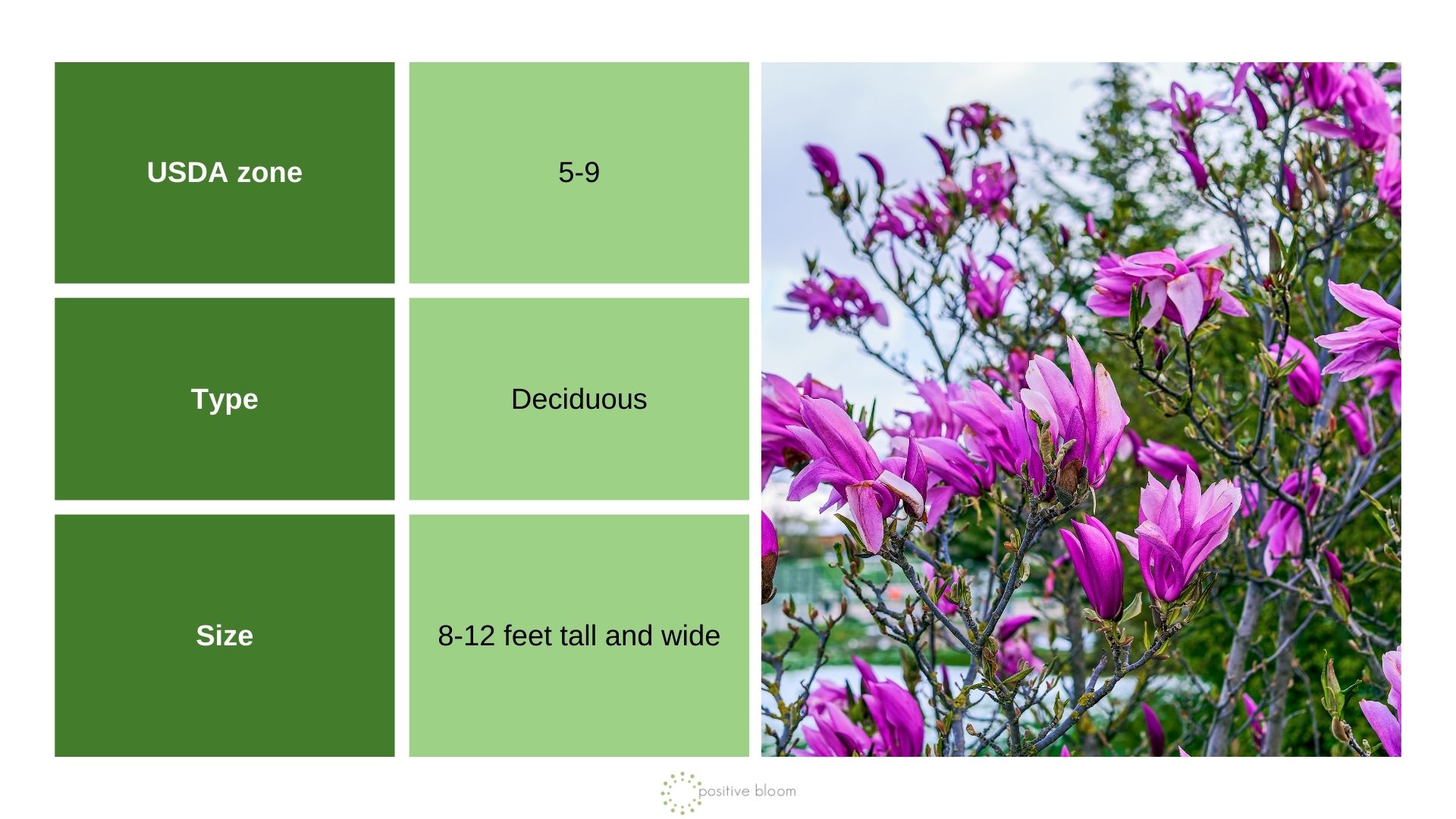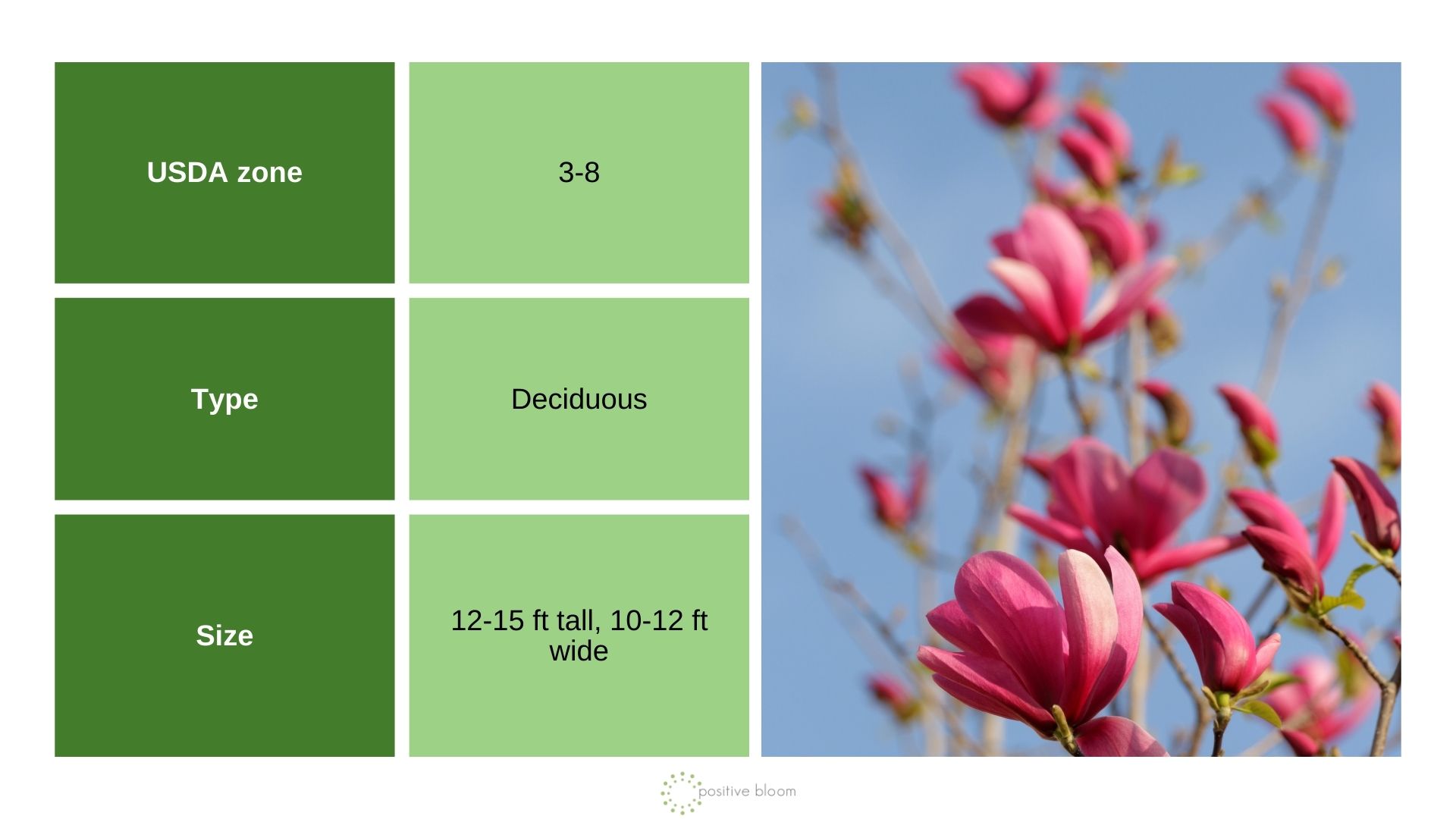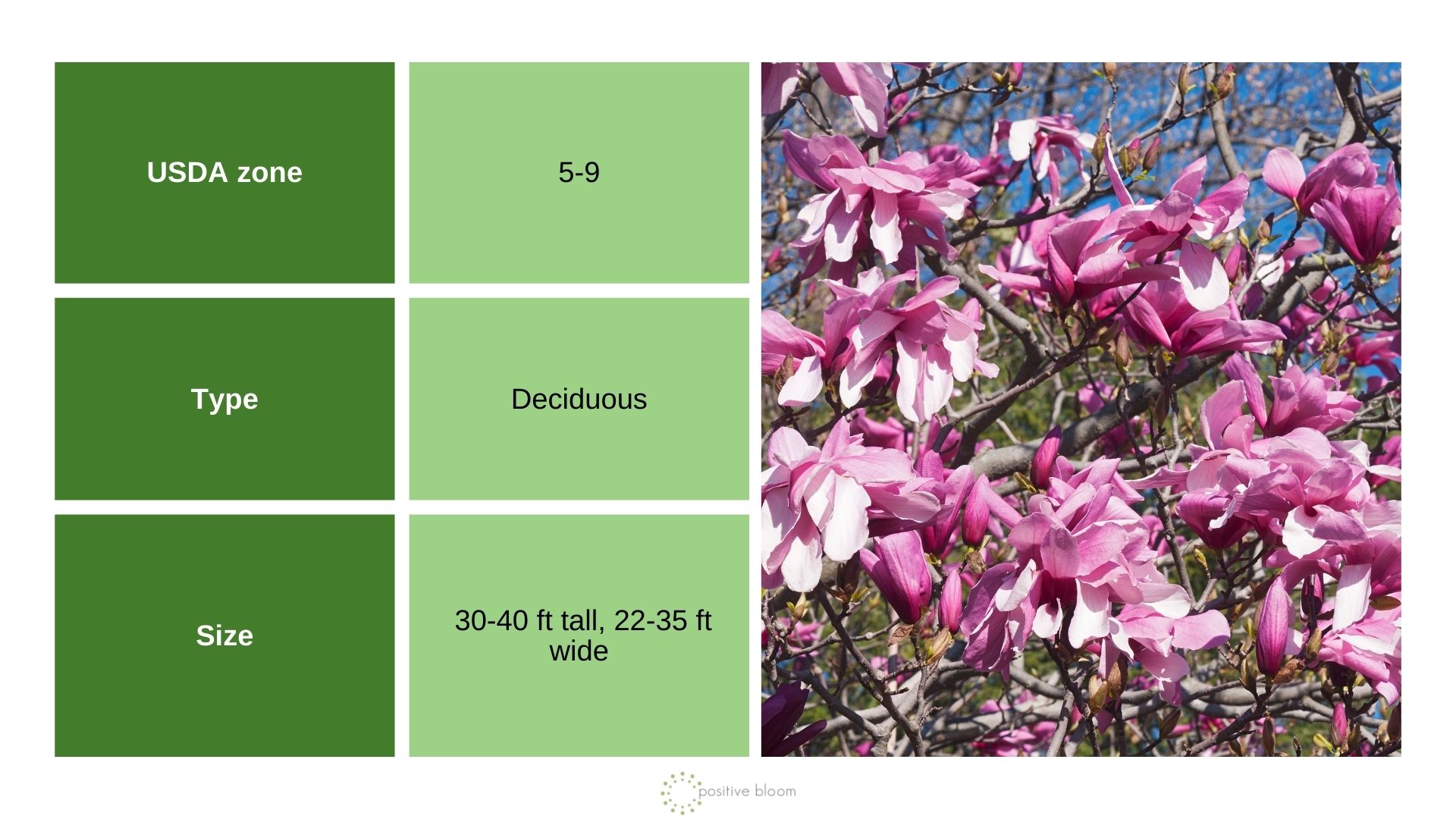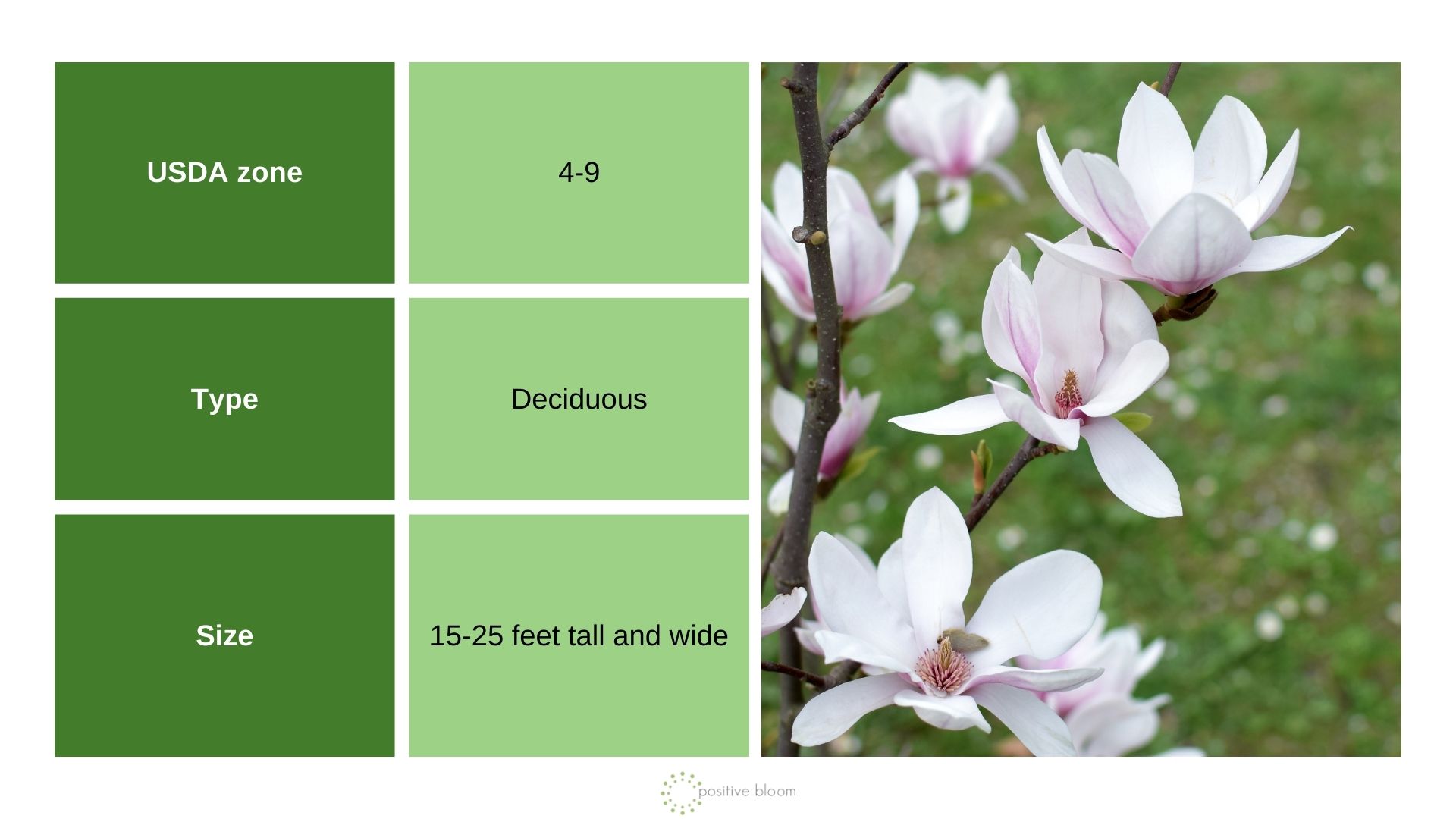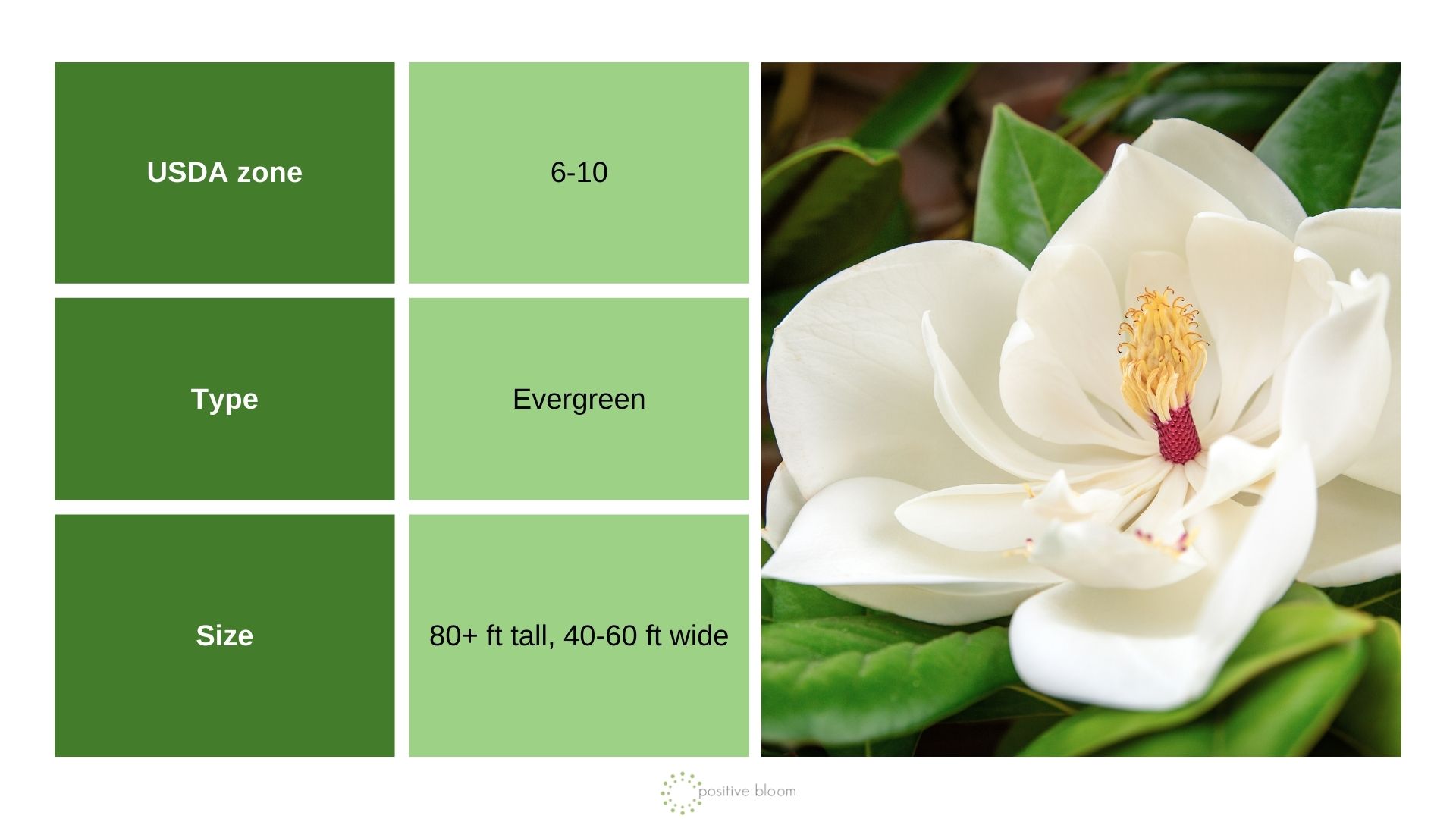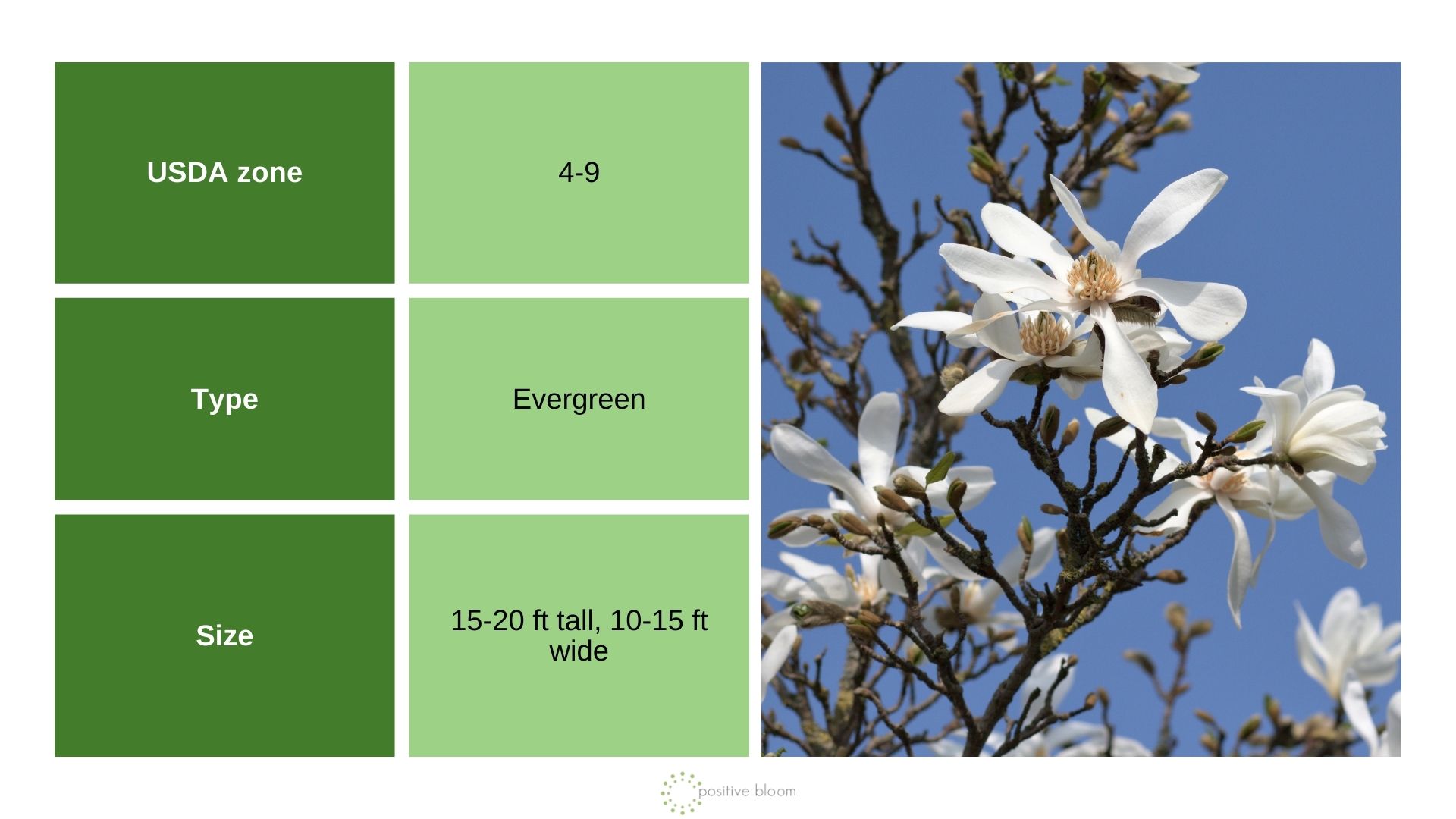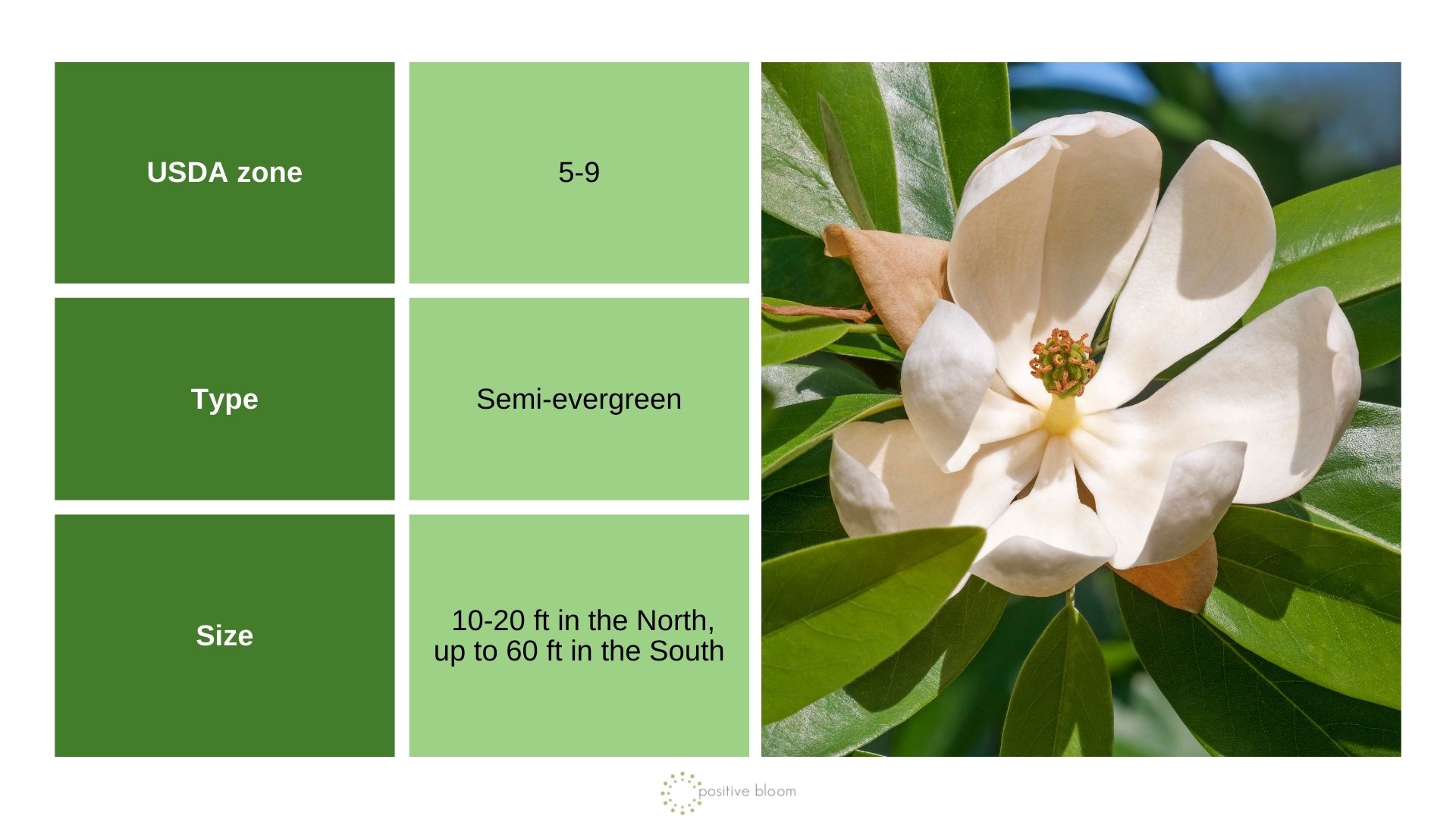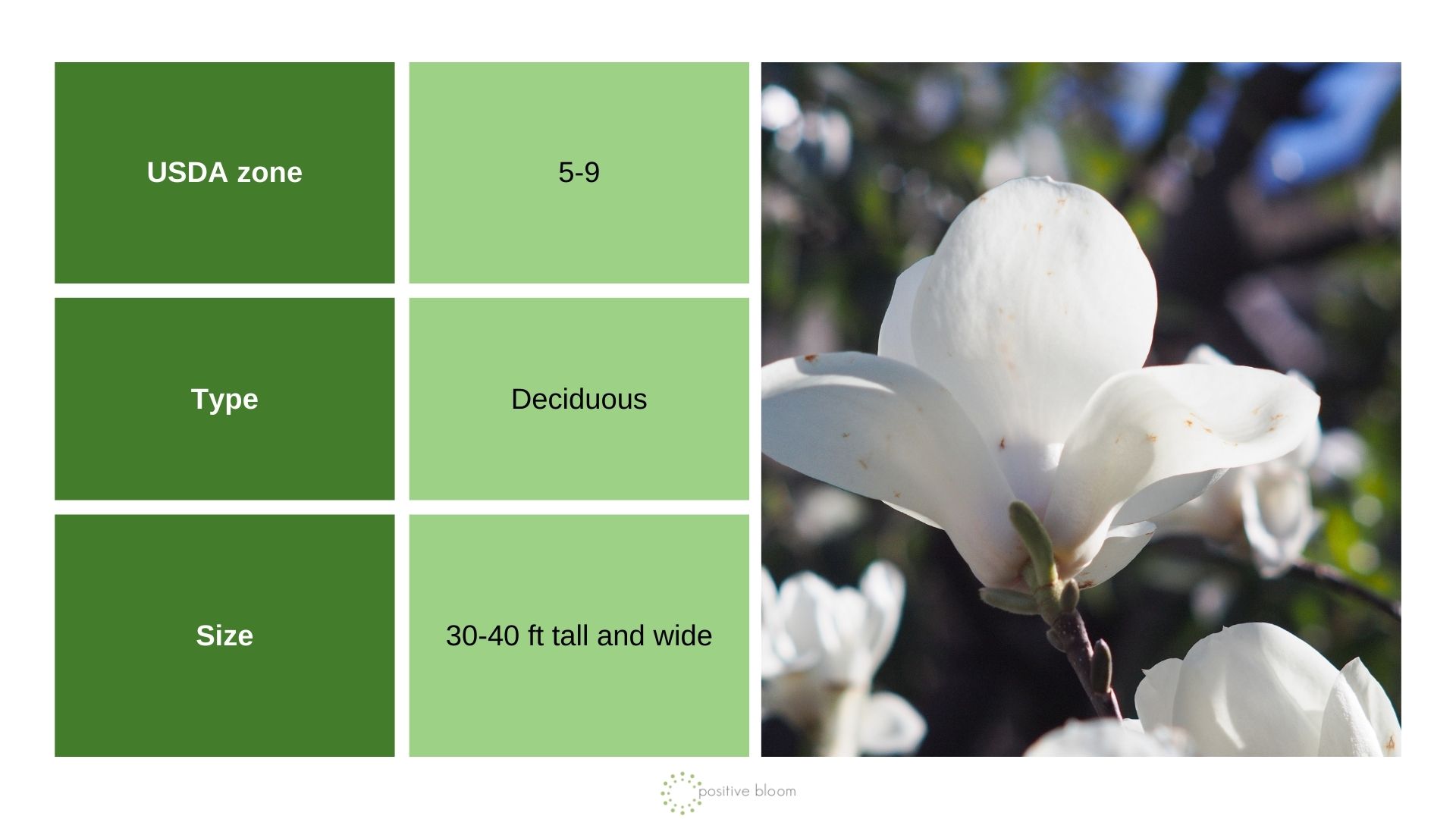Magnolias are one of my favorite shrubs (or trees). They look amazing in spring. And they spread their irresistible fragrance all over the yard. What more could you ask for?
But how can you choose the right one? With over 100 species, it may be difficult at times.
Luckily, I found some you can say are the best. Why? They look and smell the part!
Yet, this list goes further than that. It offers deciduous and evergreen varieties, large and small, white and deep pink. That way, you can choose the right one for your garden.
Let’s get started!
#1 Daybreak Magnolia
There are many trees that attract songbirds. Yet, magnolias are on the very top of many lists; daybreak magnolias in particular.
That’s because they’re not too tall and can fit even into smaller gardens. And to top it all, you can plant them near your house. They don’t spread a lot!
Flame-like flowers come in a unique shade of pink. And they grow even on young trees. This means no endless waiting for a flower exhibition!
They will attract songbirds and pollinators like crazy.
You can plant a single tree as a statement piece. Use more of them to create a unique privacy screen. Or use them in your perennial beds. Your options are endless!
But whatever you do, make sure to protect them from extreme frost and winds. They don’t do well in these conditions.
Plant your daybreak magnolias in fertile, acidic, and well-draining soil. Give them full sun or some shade for the best blossoms. And only prune diseased, dead, or damaged foliage and branches.
#2 Fairy Magnolia
If you want low-maintenance trees in your garden, try planting magnolias. I love the fairy collection because they are compact.
They can fit even in the smallest of gardens. And are perfect for containers if that’s something you’re open to.
Their flowers are interesting as well. They start off as white, turn a little blush, until they finally become creamy.
And the best part is that fairy magnolias flower for around 10 weeks. That means you’ll have more than enough time to enjoy them.
Keep these shrubs in fertile, moist, acidic, and well-draining soil. Place them in full sun, but protect them from the harsh afternoon conditions.
P.S. Fairy magnolias are pollinator magnets. And they make for an amazing green backdrop for your summer garden.
#3 Lily Magnolia
If you want some trees with purple flowers, there’s no better choice than lily magnolias. They bloom prolifically and attract bees, beetles, and other pollinators.
Lily magnolias will spread a subtle citrus scent all over your garden from March to April. The dark green leaves appear soon after flowering, bringing more interest in the following seasons.
And the best part is that they can bloom in summer on occasion.
These magnolias are an ideal focal point for small gardens. Or you can plant more of them and turn them into a colorful privacy screen or hedge.
Plant them in full sun or partial shade for prolific blooming. And make sure their soil is fertile, mildly acidic, and well-draining.
P.S. Prune them only to remove diseased and damaged branches.
#4 ‘Little Girl’ Magnolias
Magnolias are one of the best trees to plant near a house. The ‘Little Girl’ series proves it. They are compact varieties that you can even grow in planters.
These shrubs come in different colors, but pink shades are my favorite. ‘Ann’ is one of the most famous ‘Little Girl’ magnolias because of its dark purple-pink flowers.
Pollinators love these magnolias. And birds use them to build their nests.
If you need a variety suitable for colder regions, go with the ‘Betty’ cultivar. It flowers later than other ‘Little Girl’ magnolias.
And to have a flourishing garden, plant a couple of these magnolias. Turn them into a hedge, privacy screen, or a unique background.
P.S. Their green leaves will turn yellow or bronze in fall, depending on the cultivar. This will give you visual interest all year long.
#5 Magnolia ‘Galaxy’
Magnolias are great plants for privacy. Why? Because their shrubby appearance keeps everything hidden.
Especially once spring brings about their blossoms.
The deep purple-pink flowers of Magnolia ‘Galaxy’ are hard to resist. That’s why I had to include it on this list.
The blossoms are long-lasting and will attract various pollinators during their lifetime. These shrubs will also attract birds. Avians love building their nests in these magnolias.
Magnolia ‘Galaxy’ grows fast and in an upright manner. That means you can prune it into a tree. Leave the healthiest and largest branch to act as a trunk. Remove the rest, leaving a canopy on top.
Keep these magnolias in a fertile, moist, well-drained, and acidic substrate. Yet, they can adapt to pretty much anything, even wet and poor-draining mediums.
Expose them to full sun or part shade, and they’ll reward you with abundant flowers.
#6 Saucer Magnolia
You can find the saucer magnolia on the list of zone 7 trees. Yet, it can tolerate colder and warmer zones than that.
The goblet-shaped flowers have a bicolor effect. They combine white, pink, and purple shades. And the dark green leaves offer interest in spring and fall when flowers fade away. The foliage turns bronze and falls off in due time.
Saucer magnolias can look great in winter, too. Their silvery bark makes sure of that.
These shrubs are prolific bloomers and will attract pollinators to your garden. Their branches provide great shelter and a nesting spot for songbirds. And the seed pods are their favorite food in winter.
Keep them in a moist, well-draining, and acidic growing medium. Expose them to full sun for more abundant blooming. And keep them safe from winds and frost.
#7 Southern Magnolia
Southern magnolias aren’t limited to warm climates only. They can thrive in cooler regions, too.
Yet, they’re not suitable for small gardens. If you care for them the right way, these trees will reach up to 90 ft.
That is why you can find them on the list of gorgeous winter plants for year-round privacy.
Their huge white flowers exude the most exquisite fragrance. They appear in spring and summer, after which red seed pods replace them. These act as a great food source for birds in winter.
Southern magnolias are great as focal points. Give them moist, well-drained, and acidic soil. Plant them in sun or shade. They’ll flourish in these conditions soon enough!
P.S. Their abundant flowers will attract all sorts of pollinators. Your garden will soon be brimming and buzzing with bees, butterflies, and hummingbirds.
#8 Star Magnolia
If you’re looking for small trees for a compact yard, try incorporating a star magnolia. This shrub can fit pretty much anywhere. And it makes for an excellent focal point.
Its dense growth habit and silvery bark make star magnolias great privacy screens, too.
White and pink flowers of these shrubs appear in early spring. That means it can complement your other early bloomers.
And spring bulbs will love it!
Also, remember to protect them from winds and frost. Delicate blossoms will fade in these conditions, so act before that happens.
P.S. Star magnolias are perfect for woodland gardens. They deal with shade well and thrive in acidic, well-draining substrates.
#9 Sweetbay Magnolia
You want spiritual trees in your garden? Plant magnolias! They represent purity and nobility. The white or creamy flowers of the sweetbay magnolia appear between May and June. That’s the time this tree truly shines.
And the leaves don’t fall far behind. Deep green on top and silvery green on the undersides, they offer a year-long interest. What’s more, they have a subtle vanilla scent!
Of course, the sweetbay magnolia is a deciduous tree in northern regions. Yet, it can keep most of its leaves all year long in warmer climates. That’s why botanists categorized it as semi-evergreen.
What makes this magnolia so popular is that it can tolerate moist and clay soils. This is the reason we also call it swamp magnolia.
When in bloom, sweetbay magnolia will attract bees and butterflies. Later, it will produce red berries that feed the songbirds when food is scarce.
#10 Yulan Magnolia
You can find magnolias on the list of fragrant flowers that are easy to grow. And the yulan variety is no exception.
Its fragrant, creamy white flowers speak for themselves. Plant this variety, and you’ll notice a sudden increase in the bee, butterfly, and hummingbird population in your garden.
But the best part comes after flowering. That’s when the blossoms turn into seeds. And these attract various avians to your yard.
Protect your yulan magnolia from harsh and drying winds. Plant it in a rich, well-drained, and acidic substrate. Expose it to full sun or dappled shade.
This is the formula for success.
Growing Magnolia Trees In Pots
Many magnolias flourish in containers. The key is choosing the right plant, pot size, and growing medium. Of course, there are other things you should pay attention to.
Here are the basics of growing magnolias in planters:
• Go with more compact magnolia varieties. They don’t need too much space in the first place.
• Choose a large planter. It will provide enough room for your shrub’s roots. Also, make sure it has drainage holes to prevent overwatering and root rot.
• Use an acidic, well-draining potting mix rich in organic matter. It will give your magnolia everything it needs and reduce the risk of waterlogging.
• Expose your potted magnolias to at least 3 hours of direct sunlight. This will ensure prolific and high quality flowers.
Pro tip: Star magnolias are some of the best varieties for your container garden. But, you can experiment with other compact species as well.

